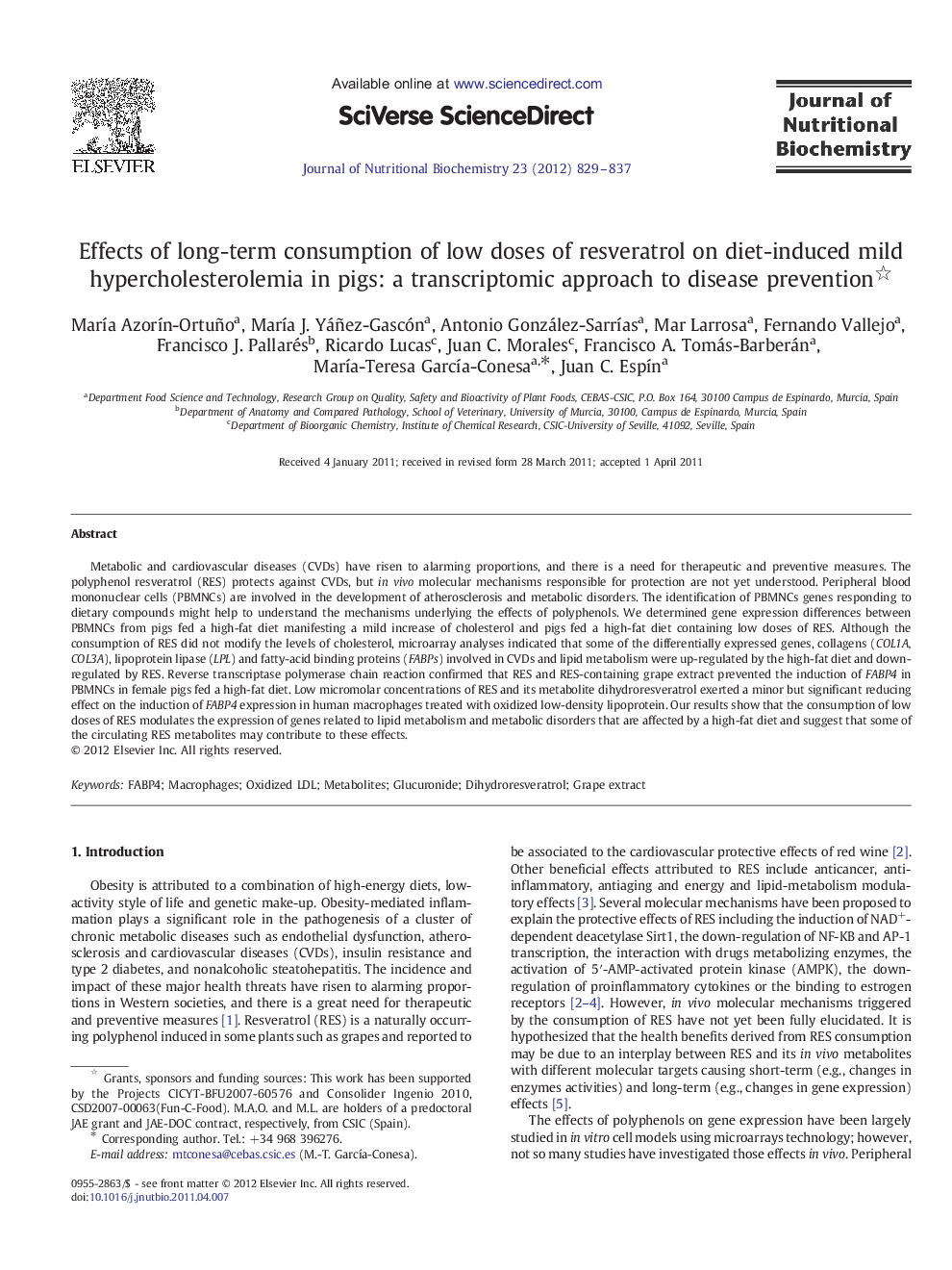| Article ID | Journal | Published Year | Pages | File Type |
|---|---|---|---|---|
| 1990333 | The Journal of Nutritional Biochemistry | 2012 | 9 Pages |
Metabolic and cardiovascular diseases (CVDs) have risen to alarming proportions, and there is a need for therapeutic and preventive measures. The polyphenol resveratrol (RES) protects against CVDs, but in vivo molecular mechanisms responsible for protection are not yet understood. Peripheral blood mononuclear cells (PBMNCs) are involved in the development of atherosclerosis and metabolic disorders. The identification of PBMNCs genes responding to dietary compounds might help to understand the mechanisms underlying the effects of polyphenols. We determined gene expression differences between PBMNCs from pigs fed a high-fat diet manifesting a mild increase of cholesterol and pigs fed a high-fat diet containing low doses of RES. Although the consumption of RES did not modify the levels of cholesterol, microarray analyses indicated that some of the differentially expressed genes, collagens (COL1A, COL3A), lipoprotein lipase (LPL) and fatty-acid binding proteins (FABPs) involved in CVDs and lipid metabolism were up-regulated by the high-fat diet and down-regulated by RES. Reverse transcriptase polymerase chain reaction confirmed that RES and RES-containing grape extract prevented the induction of FABP4 in PBMNCs in female pigs fed a high-fat diet. Low micromolar concentrations of RES and its metabolite dihydroresveratrol exerted a minor but significant reducing effect on the induction of FABP4 expression in human macrophages treated with oxidized low-density lipoprotein. Our results show that the consumption of low doses of RES modulates the expression of genes related to lipid metabolism and metabolic disorders that are affected by a high-fat diet and suggest that some of the circulating RES metabolites may contribute to these effects.
